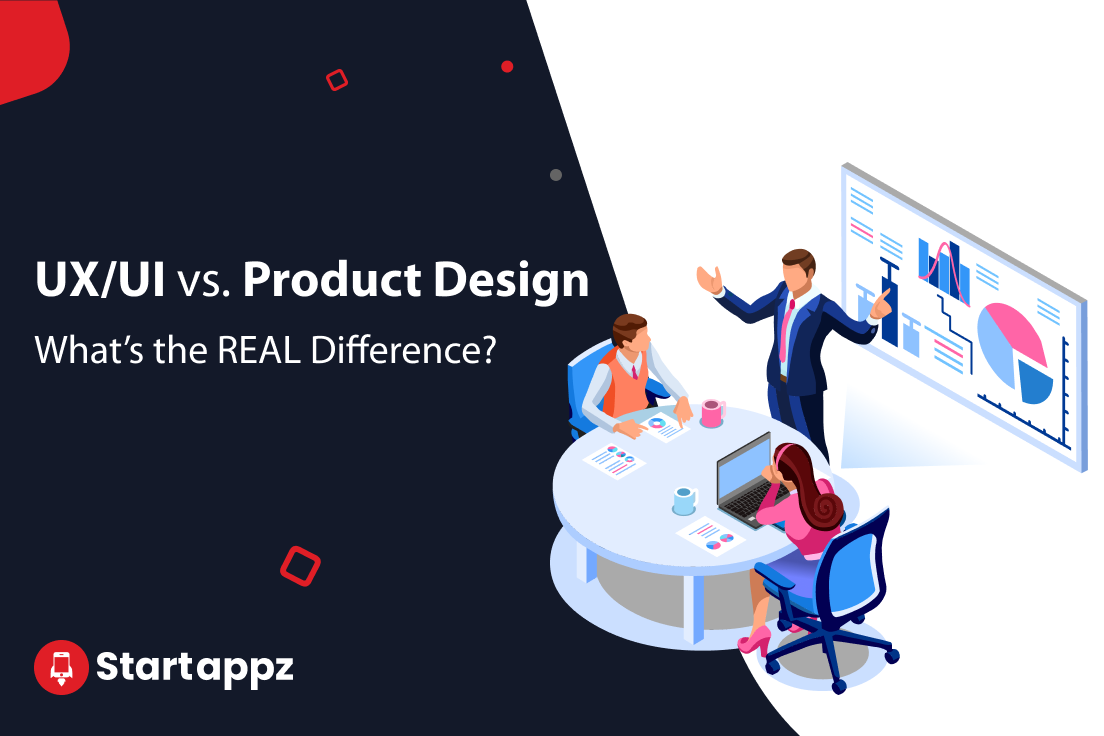Cracking the Digital Cart!
A Deep Dive into the E-Grocery App — Qualitative and Quantitative Insights”
Following the double diamond methodology, the first quarter initiates the problem statement and hypothesis to be validated by user research, and it’s an iterative process between the problem and the findings of quantitative and qualitative analysis by going back each time to narrow down and specify the problem and solution.
To come up with a real problem and a solution, you have to ask [why?] many times to touch the root of the problem, and this happens by matching the contextual interviews with the assumed solution.
Quantitative Analysis
“The initial phase of exploration involves identifying the problem statement and conducting user research, along with quantitative and qualitative research. The objective is to shape and validate the problem and the hypotheses.
Following this, I conducted an online survey to determine the target audience, which would then identify the specific segment that will progress to the next stage: one-on-one contextual interviews.”
Before going over the online survey, I avoided the mistakes and gaps in the services from operations, warehouse management, delivery management, and payment methods in the survey.
The sample of the online survey questions were as follows:
- How old are you?
- What is your gender?
- Are you married or single?
- Do you live within a family?
- How many members are in your family?
- Do you buy your groceries online?
- Do you prefer buying the groceries Online or Physically? Why?
- How often do you order groceries online? Daily/ weekly/ Monthly
- How much do you spend regularly using groceries online? Less than 20/ 20–50/ above 50 USD
- How much does it take to Finnish your grocery order using an online platform? Less than 10
- mins/ more than 20 mins/ please add the assumed time.
- Do you prefer a mobile app or a web-based application for ordering groceries?
- Do you have a ready list for grocery ordering?
The result was as follows:
Gender Distribution:
● 93% of the participants were females, accounting for 44 individuals.
Age Distribution:
● Most participants were 30 to 40 (36.2%) and 40 to 50 (29.8%).
● Other age groups comprised 19% between 20 to 30 years and 14% over 50. E-Grocery Shopping Habits:
● 29.8% of participants were heavy users of e-grocery shopping.
● 46.8% of participants used e-grocery shopping occasionally.
Preference for Physical Shopping:
● 68.1% of participants still preferred the physical experience of shopping over online.
● This preference was shared by 23.4% of participants who used e-grocery shopping occasionally.
Frequency of Online Grocery Orders:
● 66% of participants reported ordering groceries online monthly.
● This behavior was common among non-heavy e-grocery shoppers.
● Among these participants, 70.4% spent less than 50 JOD, and 40% paid less than 20 JOD.
These findings suggest that they mainly used e-grocery for purchasing specific items while relying on physical shopping for their complete grocery needs.
Difficulty using E-Grocery Apps:
● 61.7% of participants who spent over 20 minutes on orders below 50 JOD indicated difficulty using e-grocery apps.
Shopping Behavior:
● 51.1% of participants preferred a ready list and used the search feature to find desired items.



The target audience:
Based on these survey findings, the target audience for e-grocery services is primarily female, focusing on middle-aged individuals. They have varying levels of e-grocery shopping experience and demonstrate a preference for physical shopping while utilizing e-grocery for specific needs and convenience. Understanding these demographics and behaviors can help tailor e-grocery services and marketing strategies to effectively reach and engage the target audience.
Qualitative Analysis
Finalizing the Quantitative analysis and finding the right audience and segment enabled me to prepare the right direction in forming the questions. The substantial part is the depth of the actual behaviors and the user’s assumptions. Still, I have to ensure the conflict between the answers because everyone tends to answer their wishes rather than their actual conduct.
I conducted a one-on-one contextual interview to gain more depth into their behaviors, challenges/obstacles & what they are looking for.
As I mentioned, my audience is people who still tend and like to purchase groceries physically.
Here are the questions asked in person for around six people; each interview took approximately 20 minutes of discussion, the interview was friendly, and many questions were answered without asking addressed questions.
Questions:
Demographic Information:
- Can you tell me a bit about yourself, such as age, gender, and occupation?
- Could you describe your typical daily routine?
- Do you plan meals ahead of time, or do you prefer to decide on the day?
E-Grocery Shopping Habits:
- What factors influence your decision to shop for groceries online?
- What are the main advantages or benefits you perceive in using e-grocery services?
- Can you describe any challenges or difficulties you face using e-grocery apps or websites?
- Can you walk me through a recent experience you had using a grocery app to order groceries?
- What are the most important factors you consider when deciding which grocery app to use?
- How do you decide what items to add to your grocery cart?
- Do you tend to stick with certain brands or products, or are you open to trying new things?
- What do you typically do when you can’t find a particular product on the app?
Preference for Physical Shopping:
- Why do you still prefer the physical experience of shopping for groceries?
- Are there specific aspects or benefits of physical shopping that you find essential?
- What would motivate you to consider using e-grocery services more frequently?
Frequency and Spending Behavior:
- How frequently do you typically order groceries online in a month?
- Regarding online grocery shopping, what factors influence your spending behavior?
- How do you decide which items to purchase online versus in physical stores?
- Can you share specific examples of things you prefer to buy physically and why?
- User Experience and Expectations:
- What features or functionalities do you look for in an e-grocery app or website?
- How important is the ease of use and navigation when using e-grocery services?
- What would make your online grocery shopping experience more enjoyable or convenient?
- What features or capabilities make your grocery app experience more enjoyable or efficient?
Personalization and Recommendations:
- How do you feel about personalized recommendations for groceries while using e-grocery services?
- Would you like to receive tailored offers or suggestions based on your shopping habits or preferences?
Future Outlook:
- Do you foresee any changes in your e-grocery shopping habits soon?
- Are there any improvements or additions you would like to see in e-grocery services?
- How important is it to you that the grocery app is easy to navigate and use?
- Are there any specific features that you find particularly helpful or frustrating?
Finding:
The age of interviewees are from 30 to 40, and they are familiar with digital platforms, but they need to be tech-savvy at different levels.
The noticeable thing in the behaviors is that behavior changed according to the digital services users used. The essential common thing between all answers is they are looking for good quality at a reasonable price/ some of them sticking to specific brands; they are afraid that they are scammed by e-grocery service by receiving wrong items, overpriced, quality, all of them have difficulty of using e-grocery at different levels based on their digital experience, all of them prefer to use the search with assuming they will land directly on the desired product.
Be able to analyze these answers’ outputs to cluster them and build the persona that will be my reference regarding goals, experience, and frustrations.
This will support me in creating the needed stories along with related journeys to spot the opportunities for enhancement from features and experience in the later stages.
My Persona
Name: Lamar
Age: 35
Occupation: Marketing Manager
Background:
Lamar is a busy working professional in her mid-thirties. She leads a demanding life, working full-time for around 44 hours per week, with two days off. She is familiar with social and chat apps like WhatsApp, Facebook Messenger, and Instagram.
Goals and Needs:
Convenience and Time-saving: Lamar’s hectic schedule leaves her with limited time for grocery shopping. She seeks an e-grocery service that offers convenience, saves her time, and allows her to order all her grocery needs online, not just the missing items for her daily cooking or immediate needs.
Quality and Reasonable Prices: Lamar values good quality products at a reasonable price. She wants the e-grocery service to provide a wide range of high-quality products across various categories, including fresh produce, pantry staples, personal care items, and household supplies.
Trust and Reliability: Lamar wants to feel confident that the e-grocery service she chooses is trustworthy and reliable. She seeks a service that consistently delivers the correct items, maintains fair pricing, and ensures the freshness and quality of products.
User-Friendly Experience: Lamar may have varying levels of digital experience, so she prefers an e-grocery platform that is easy to use, even for those with limited technical expertise. She wants a seamless and intuitive user interface that allows her to navigate the app or website effortlessly, easily adding all her desired groceries to the cart.
Frustrations and Pain Points:
Fear of Scams: Lamar worries about being scammed by e-grocery services, such as receiving incorrect items, overpaying, or encountering quality issues. She desires transparency and wants the e-grocery service to prioritize customer satisfaction and promptly address concerns.
Difficulty using E-Grocery: Lamar experiences challenges using e-grocery platforms, given her varying digital experience. She may need clarification on certain features or processes. She desires clear instructions, intuitive navigation, and accessible customer support to assist her when needed.
Behavior:
Preference for Specific Brands: Lamar tends to stick to specific brands she trusts when it comes to purchasing groceries. She expects the e-grocery service to offer a wide range of trusted brands across different product categories.
Complete Grocery Orders: Lamar prefers ordering all her grocery needs online, not just the missing items. She wants the e-grocery service to provide a comprehensive selection of products, allowing her to fulfill her entire grocery list conveniently.
Reliance on Search Feature: Lamar relies on the search feature within the e-grocery app or website to quickly find her desired products. She expects the search functionality to be efficient and accurate, enabling her to locate specific items easily.
Considering Lamar’s expanded preference for ordering all her groceries online and her emphasis on quality, trust, and a user-friendly experience, e-grocery services can tailor their offerings to cater to her needs. By providing a wide range of high-quality products, ensuring accurate and timely deliveries, addressing concerns about scams, offering user-friendly interfaces, and streamlining search functionality, e-grocery services can meet Lamar’s expectations and become her go-to solution for all her grocery needs.

Source: https://medium.com/design-bootcamp/cracking-the-digital-cart-72e0f24fa8c6





